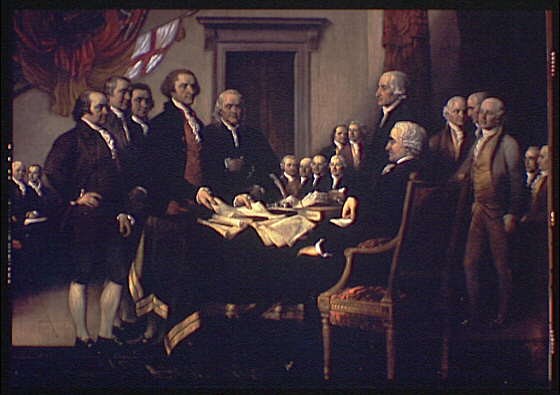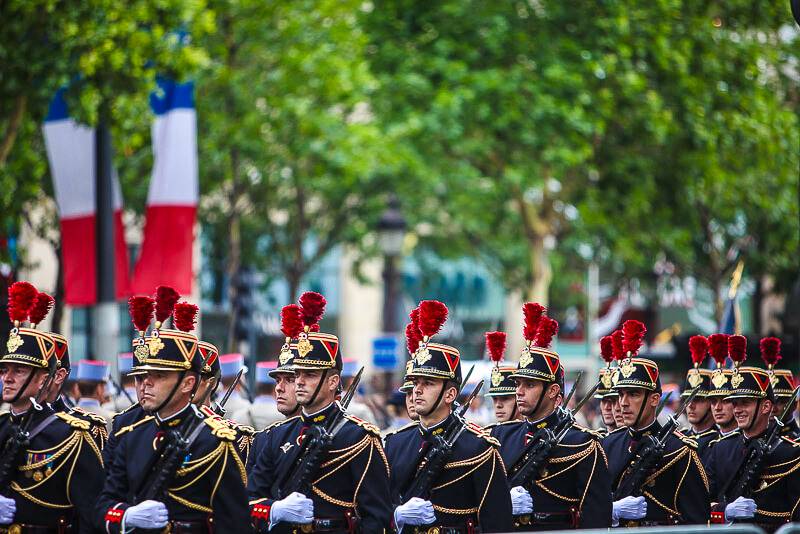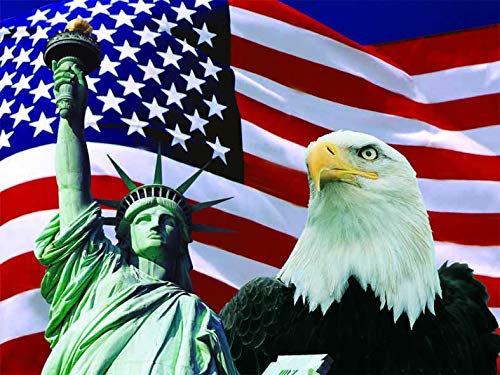As we approach the most anticipated national holiday of the year, it's essential to take a step back and appreciate the significance of Independence Day in 2025. This pivotal celebration commemorates the adoption of the Declaration of Independence on July 4, 1776, marking the birth of the United States of America as an independent nation. Unraveling the History Independence Day is rooted in the country's struggle for freedom from British rule. The American Revolutionary War, fought between 1775 and 1783, was a defining moment in the nation's history. The courageous efforts of American patriots, such as George Washington, Thomas Jefferson, and John Adams, paved the way for the signing of the Declaration of Independence, proclaiming the 13 American colonies' sovereignty.
The Evolution of Traditions
Over time, Independence Day has evolved into a joyous celebration, filled with vibrant traditions and customs. Some of the most iconic practices include:- Fireworks Displays: A staple of Independence Day celebrations, fireworks light up the night sky, symbolizing the "rockets' red glare" from the national anthem.
- Patriotic Music: Classic American tunes, such as "The Star-Spangled Banner" and "America the Beautiful," fill the air, evoking feelings of national pride.
- Parades and Processions: Communities come together to organize parades, often featuring marching bands, floats, and cultural performances.
- Family Gatherings and BBQs: Independence Day is a time for family reunions, outdoor barbecues, and quality time with loved ones.
- Honors the Brave: Pays tribute to the courageous men and women who have fought to protect American independence throughout history.
- Fosters Unity: Brings people together, transcending cultural and socio-economic divides, in a shared celebration of national identity.
- Inspires Patriotism: Encourages individuals to reflect on their role in shaping the nation's future, instilling a sense of responsibility and civic duty.

A Look Back at American Independence
The Birth of a Nation: Understanding the Historical Context
The Declaration of Independence, adopted on July 4, 1776, marked a pivotal moment in American history, signaling the country's formal separation from Great Britain. However, the road to independence was a long and arduous one, spanning over a decade of turmoil and conflict. To appreciate the significance of this milestone, it's essential to delve into the historical context that led to the American Revolutionary War. In the mid-18th century, the British Empire imposed a series of taxes on its American colonies without granting them representation in Parliament. This led to growing discontent among the colonists, who felt that they were being exploited and denied their basic rights as British subjects. Tensions escalated with the Boston Massacre (1770) and the Boston Tea Party (1773), which prompted the British government to pass a series of punitive measures known as the Coercive Acts.The Key Players and Events That Shaped Independence
Several influential figures played crucial roles in shaping the course of American independence:- George Washington: The commander-in-chief of the Continental Army, Washington's leadership and strategic prowess were instrumental in securing crucial victories, including the Battle of Trenton and the Battle of Yorktown.
- Thomas Jefferson: The primary author of the Declaration of Independence, Jefferson's eloquent writing and philosophical ideals helped to galvanize public opinion and articulate the colonies' grievances against Great Britain.
- Benjamin Franklin: A respected statesman, scientist, and diplomat, Franklin played a key role in securing French support for the American cause, which proved decisive in the war effort.
- The Continental Congress: This gathering of colonial representatives, which included luminaries like John Adams and Patrick Henry, provided a unified voice for the colonies and coordinated the resistance against British rule.
- Battle of Lexington and Concord: The first battle of the war, fought on April 19, 1775, saw American colonists inflict significant casualties on British forces, demonstrating their resolve to resist British rule.
- Declaration of Independence: Adopted on July 4, 1776, this landmark document formally declared the 13 colonies' independence from Great Britain and established the principles of equality, liberty, and democracy.
- Surrender at Yorktown: The final major battle of the war, fought in October 1781, saw British General Charles Cornwallis surrender his army to Washington's forces, effectively ending the war and paving the way for British recognition of American independence.
Evolution of Independence Day Celebrations
Over time, the way Americans celebrate Independence Day has undergone significant changes, reflecting the country's growth, cultural shifts, and changing attitudes towards patriotism. In the early years, Independence Day was marked by solemn ceremonies, fireworks, and patriotic speeches. However, as the 19th century progressed, the holiday became increasingly commercialized, with parades, baseball games, and backyard barbecues becoming staples of American celebrations. In the 20th century, Independence Day took on a more symbolic significance, with many Americans using the holiday to reflect on the country's founding values and the ongoing struggle for freedom and equality. Today, Independence Day is celebrated with a mix of traditional festivities, cultural events, and somber tributes to the nation's rich history and the sacrifices made by its founding fathers. By examining the historical context, key figures, and events that shaped American independence, we can gain a deeper appreciation for the significance of Independence Day and the enduring spirit of liberty that continues to inspire generations of Americans.
Modern Independence Day Traditions
Popular Modern Traditions
On Independence Day, Americans often gather with family and friends to enjoy a range of festivities. Some of the most popular modern traditions include:- Parades: Colorful processions featuring marching bands, floats, and community groups are a staple of Independence Day celebrations. These parades often take place in the morning, setting the tone for a fun-filled day.
- Barbecues: Backyard cookouts and picnics are a classic way to celebrate the 4th of July. Grilled burgers, hot dogs, and sides like coleslaw and baked beans are often on the menu.
- Fireworks Displays: The night sky is illuminated with dazzling fireworks displays, synchronized to patriotic music. These spectacular shows are often accompanied by oohs and ahhs from the crowd.
Regional Variations
While these modern traditions are widespread, regional variations add a unique flavor to Independence Day celebrations across the United States. For instance:- New England: In the Northeast, Independence Day is often marked with traditional town fairs, featuring games, food vendors, and live music.
- Southern States: In the South, 4th of July celebrations often blend with summertime traditions, such as outdoor concerts and watermelon seed-spitting contests.
- West Coast: On the West Coast, Independence Day is often celebrated with beach parties, surfing competitions, and outdoor movie screenings.
Cultural and Social Significance
These modern Independence Day traditions hold significant cultural and social importance. They:- Foster Community Spirit: Neighborhood gatherings and community events promote a sense of belonging and togetherness among Americans.
- Preserve History: By commemorating the country's founding, these traditions keep alive the memory of America's struggle for independence and self-governance.
- Embody American Values: Independence Day celebrations reflect the values of freedom, patriotism, and joy, which are core to the American identity.

Patriotic Symbols and Their Meaning
Unfurling the Symbolism of the American Flag
The American flag, also known as the Stars and Stripes, is perhaps the most recognized and revered patriotic symbol in the United States. The flag's design consists of thirteen horizontal stripes, alternating between red and white, and a blue rectangle in the canton (upper corner nearest the pole) with fifty white stars. But what do these colors and symbols truly represent? The thirteen stripes symbolize the original thirteen colonies that declared independence from Great Britain, while the fifty stars represent the fifty states that make up the United States today. The colors of the flag hold significant meaning as well: red represents hardiness and valor, white represents purity and innocence, and blue represents vigilance, perseverance, and justice.The Bald Eagle: A Symbol of Freedom and Strength
The bald eagle, with its majestic wingspan and piercing gaze, is an iconic symbol of American strength, freedom, and independence. This majestic bird was chosen as the national bird of the United States in 1782, and its image appears on various government seals, coins, and currency. In Native American culture, the eagle is considered a sacred animal, associated with spiritual and mystical powers. The bald eagle's selection as a national symbol was largely due to its impressive physical characteristics, such as its impressive wingspan, sharp talons, and strong build. These attributes symbolize the nation's ideals of strength, courage, and freedom.Other Patriotic Symbols and Their Meanings
In addition to the American flag and the bald eagle, there are several other patriotic symbols that hold significant meaning in American culture:- The Liberty Bell: This iconic bell, located in Philadelphia, Pennsylvania, is a symbol of American independence and freedom. Its inscription, "Proclaim Liberty throughout all the Land unto all the Inhabitants thereof," is a quote from the Bible (Leviticus 25:10).
- The Statue of Liberty: This majestic statue, gifted by France to the United States in 1886, symbolizes the ideals of freedom, democracy, and opportunity. The statue's tablet is inscribed with the date of the American Declaration of Independence.
- The American Shield: Also known as the Great Seal of the United States, this symbol features a bald eagle with outstretched wings, holding an olive branch and a bundle of thirteen arrows in its talons. The shield represents the nation's defense and protection of its citizens.
Historical Context and Evolution of Patriotic Symbols
The development and evolution of patriotic symbols in the United States have been shaped by historical events, cultural influences, and societal values. The American flag, for instance, has undergone twenty-seven design changes since its adoption in 1777, with the number of stripes and stars being updated to reflect the addition of new states to the Union. The bald eagle, too, has undergone a transformation in its symbolism over time. Initially, the eagle was seen as a symbol of war and aggression, but later it came to represent freedom, strength, and independence. The Statue of Liberty, which was initially intended as a symbol of international friendship, has become a powerful symbol of American values and ideals.Contemporary Celebrations and the Significance of Patriotic Symbols
Patriotic symbols continue to play a vital role in contemporary American celebrations and cultural events. These symbols are often displayed prominently during national holidays such as Independence Day, Memorial Day, and Veterans Day. They are also featured in public gatherings, parades, and sporting events, serving as a reminder of American history, values, and ideals. In conclusion, patriotic symbols are more than just visual representations of American culture – they hold deep meaning and significance, reflecting the nation's history, values, and ideals. By understanding the symbolism behind these icons, we can deepen our appreciation for American heritage and the principles that shape our national identity.
Planning the Perfect Independence Day Celebration in 2025
Theme and Decorations
Before you start sending out invitations, decide on a theme that sets the tone for your celebration. Classic red, white, and blue is always a winner, but you could also consider a patriotic twist on a summer BBQ or a vintage-inspired extravaganza. Once you've settled on a theme, start thinking about decorations. Balloons, streamers, and DIY bunting are all easy ways to add a pop of color to your outdoor space. Don't forget to hang those American flags proudly!Activities and Events
No Independence Day celebration is complete without some exciting activities and events! Here are a few ideas to get you started:- Fireworks Frenzy: If your local laws permit, consider hosting a fireworks display or setting up a sparkler station for kids (and kids-at-heart) to enjoy.
- Patriotic Playtime: Organize lawn games like cornhole, horseshoes, or badminton with a red, white, and blue twist.
- Kids' Zone: Set up a designated area for face painting, patriotic crafts, and other fun activities designed specifically for younger guests.
- Community Contest: Host a patriotic-themed baking competition, costume contest, or even a water balloon toss to get everyone in on the fun.
Safety Precautions and Responsible Celebration Practices
While it's essential to have fun, safety should always be your top priority. Here are some responsible celebration practices to keep in mind:- Fire Safety: Ensure that fireworks and sparklers are kept at a safe distance from flammable materials and that you have a fire extinguisher on hand.
- Hydration Station: Provide plenty of cold water and encourage guests to drink regularly to stay hydrated.
- Respect the Environment: Encourage recycling, reduce waste, and avoid using single-use plastics whenever possible.
- Neighborhood Considerations: Be mindful of noise levels, especially if you live in a residential area, and avoid hosting events that may disturb your neighbors.
Food and Beverages
A delicious spread of food and beverages is essential for any successful Independence Day celebration. Here are some star-spangled ideas to get you started:- Backyard BBQ: Grill up some classic American fare like burgers, hot dogs, and veggie skewers.
- Patriotic Picnic: Set up a charming picnic area with red, white, and blue blankets, and serve refreshing summer salads and finger foods.
- Cool Treats: Offer cooling treats like watermelon, popsicles, and ice cream sandwiches to help guests beat the heat.

Frequently Asked Questions (FAQ)
What is the historical significance of Independence Day?
The adoption of the Declaration of Independence on July 4, 1776, is a pivotal event in American history, marking the birth of the United States as an independent nation. This historic document declared the 13 American colonies' sovereignty from Great Britain, shaping the course of the country's future and earning its place as a cornerstone of American democracy. The Road to Independence ------------------------ The journey to independence was long and arduous, with tensions between the colonies and Great Britain simmering for decades. The Proclamation of 1763, which prohibited westward settlement, and the Stamp Act of 1765, which imposed taxes on printed materials, were just a few of the many grievances that fueled the colonists' desire for self-governance. As the British government continued to exert its authority, the colonists began to organize and resist, eventually forming the Continental Congress in 1774. The Declaration of Independence ----------------------------- drafted by a committee consisting of Thomas Jefferson, John Adams, Benjamin Franklin, Robert Livingston, and Roger Sherman, the Declaration of Independence was a formally written document that not only declared the colonies' independence but also outlined the fundamental principles of equality, liberty, and democracy. The document's eloquent words, particularly the famous phrase "all men are created equal," have inspired generations of Americans and continue to shape the country's values and ideals. Key Provisions -------------
- The Right to Life, Liberty, and the Pursuit of Happiness: The document asserts that these fundamental rights are unalienable and inherent to all human beings.
- The Consent of the Governed: The Declaration establishes the principle that governments derive their power from the consent of the governed, and that when a government becomes destructive of these principles, it is the right of the people to alter or abolish it.
- The List of Grievances: The document presents a detailed list of grievances against King George III, highlighting the colonies' justified reasons for seeking independence.
The Birth of a Nation
The adoption of the Declaration of Independence marked the official beginning of the United States as an independent nation. This momentous event has been celebrated as Independence Day ever since, with parades, fireworks, and patriotic festivities becoming an integral part of American culture.A Symbol of Freedom and Democracy
Independence Day has become a powerful symbol of freedom and democracy, not just for Americans but for people around the world. The Declaration of Independence has inspired countless movements for independence and self-determination, cementing its place as a cornerstone of modern democracy. In conclusion, the historical significance of Independence Day lies in its role as a beacon of freedom, democracy, and self-governance. The adoption of the Declaration of Independence marked a turning point in American history, shaping the country's values, principles, and future. As Americans celebrate this momentous occasion, they honor the courage and vision of the nation's founders, who dared to dream of a better tomorrow.How is Independence Day celebrated in different parts of the US?
Regional Flavors of Independence Day Celebrations While Independence Day is a national holiday, its celebrations vary significantly across different regions of the United States. From coast to coast, each area infuses its unique cultural, historical, and social characteristics into the festivities, making every celebration distinct and memorable.
East Coast Traditions
The East Coast, where the American Revolution was born, is home to some of the oldest and most iconic Independence Day celebrations. In Boston, Massachusetts, the city's famous Boston Pops Fireworks Spectacular takes center stage, featuring a live performance by the Boston Pops Orchestra and a dazzling fireworks display over the Charles River. In New York City, the Macy's 4th of July Fireworks Show is a must-see, with millions of spectators gathering along the Hudson River to watch the mesmerizing display.Southern Charm
In the South, Independence Day celebrations are often infused with good old-fashioned hospitality and warm weather. In Charleston, South Carolina, the city's historic district is adorned with patriotic decorations, and locals gather for a traditional Lowcountry boil, featuring fresh seafood, corn, and potatoes. In Nashville, Tennessee, the "Music City" hosts a free concert at the Riverfront Park, featuring performances by country music stars and a stunning fireworks display.Midwestern Pride
The Midwest, known for its heartland values, celebrates Independence Day with classic American flair. In Chicago, Illinois, the city's iconic Navy Pier is transformed into a patriotic wonderland, complete with live music, food vendors, and a majestic fireworks display over Lake Michigan. In Indianapolis, Indiana, the Indiana State Fairgrounds host a massive celebration, featuring a parade, live music, and a thrilling fireworks show.Western Spectacles
On the West Coast, Independence Day celebrations are often marked by sun-kissed weather and outdoor adventures. In San Francisco, California, the city's Fisherman's Wharf is abuzz with live music, street performers, and a dazzling fireworks display over the Bay Bridge. In Las Vegas, Nevada, the Strip is transformed into a patriotic party zone, with casinos and hotels hosting elaborate fireworks displays and live entertainment.- Common Threads: Despite these regional differences, some common traditions unite Independence Day celebrations across the US. These include:
- Parades: Many cities and towns host patriotic parades, often featuring marching bands, floats, and community groups.
- Fireworks: Fireworks displays are a staple of Independence Day celebrations, ranging from small-town shows to massive, city-wide spectacles.
- Barbecues: Backyard barbecues and outdoor cookouts are a popular way to gather with family and friends, often featuring classic American fare like hot dogs, hamburgers, and BBQ ribs.
- Community Gatherings: Town squares, parks, and other public spaces host community gatherings, featuring live music, food vendors, and children's activities.
What are some safety tips for celebrating Independence Day?
Celebrating Independence Day Safely: Tips for a Fun and Hazard-Free 4th of July As the summer sun beats down, millions of Americans eagerly anticipate the Independence Day celebrations. While the 4th of July is a time for patriotism, family gatherings, and merriment, it's essential to prioritize safety to ensure a fun and memorable experience for everyone involved. In this article, we'll delve into crucial safety tips to help you celebrate our nation's birthday without any mishaps. Firework Safety: Handle with Care Fireworks are an integral part of Independence Day celebrations, but they can also be hazardous if not handled properly. According to the National Fire Protection Association (NFPA), fireworks account for thousands of fires and injuries every year. To avoid becoming a statistic, follow these firework safety guidelines:
- Only purchase fireworks from licensed vendors to ensure they meet safety standards.
- Read and follow the instructions on each firework carefully.
- Keep a fire extinguisher or water source nearby in case of emergencies.
- Light fireworks in a safe, flat area away from flammable materials.
- Never leave lit fireworks unattended and keep them out of reach of children.
- Dispose of used fireworks properly by soaking them in water and disposing of them in a fireproof container.
- Teach children the importance of firework safety and the consequences of misusing them.
- Keep children at a safe distance from lit fireworks and avoid letting them handle them.
- Designate a meeting spot in case you get separated during the celebrations.
- Keep a fire pit or BBQ at a safe distance from flammable materials.
- Ensure outdoor furniture and decorations are flame-resistant.
- Keep a fire extinguisher or water source nearby in case of emergencies.

